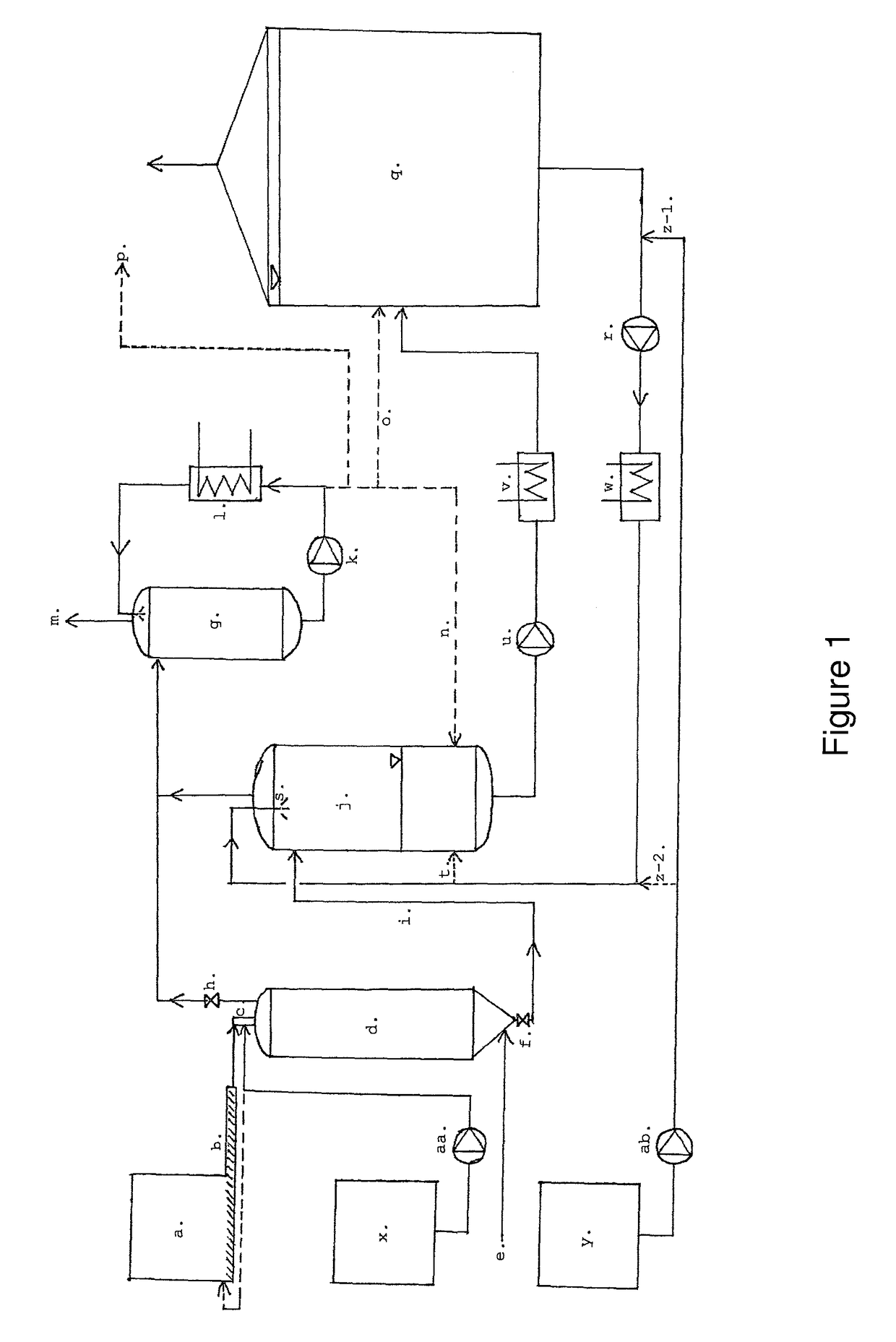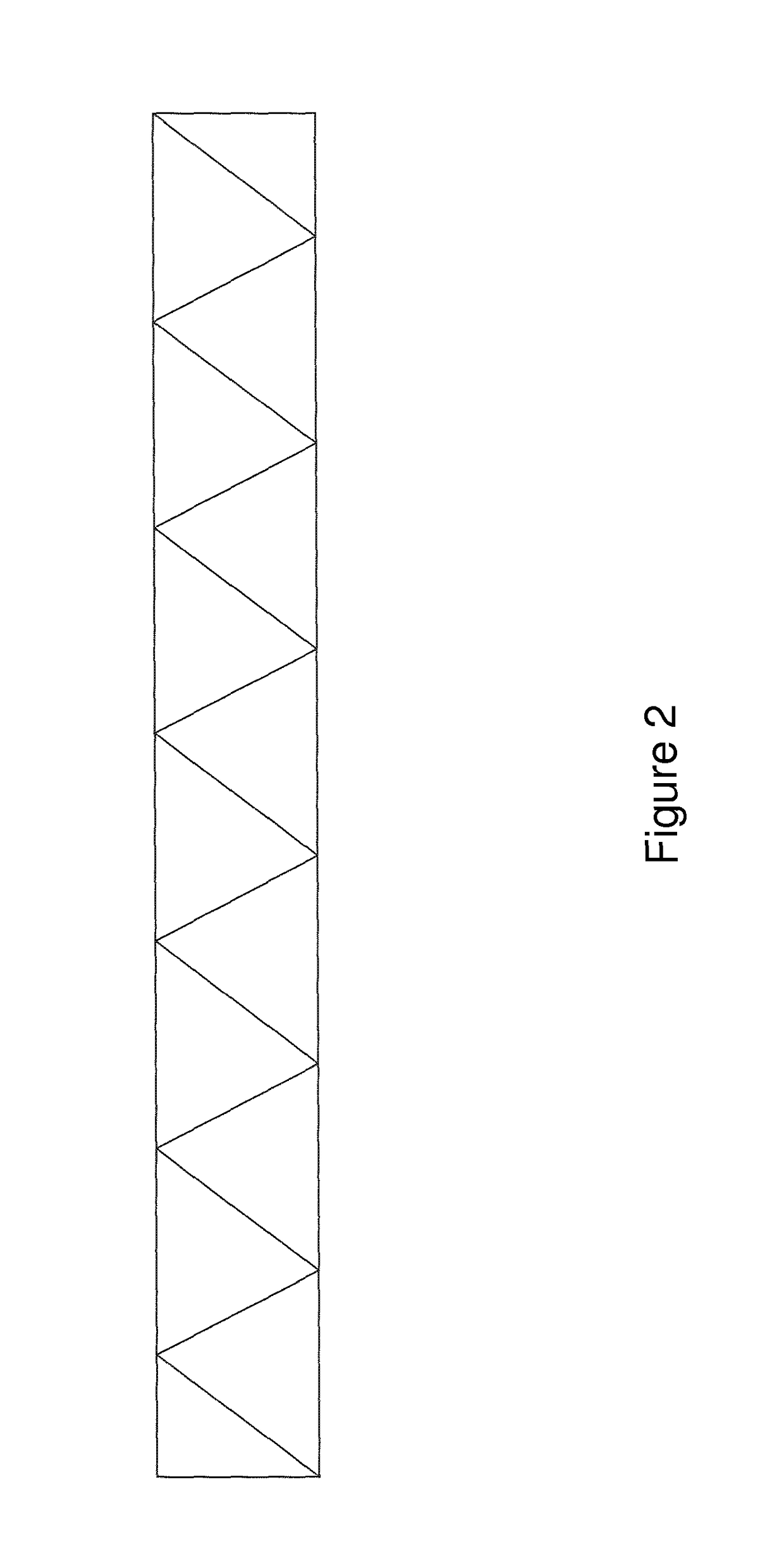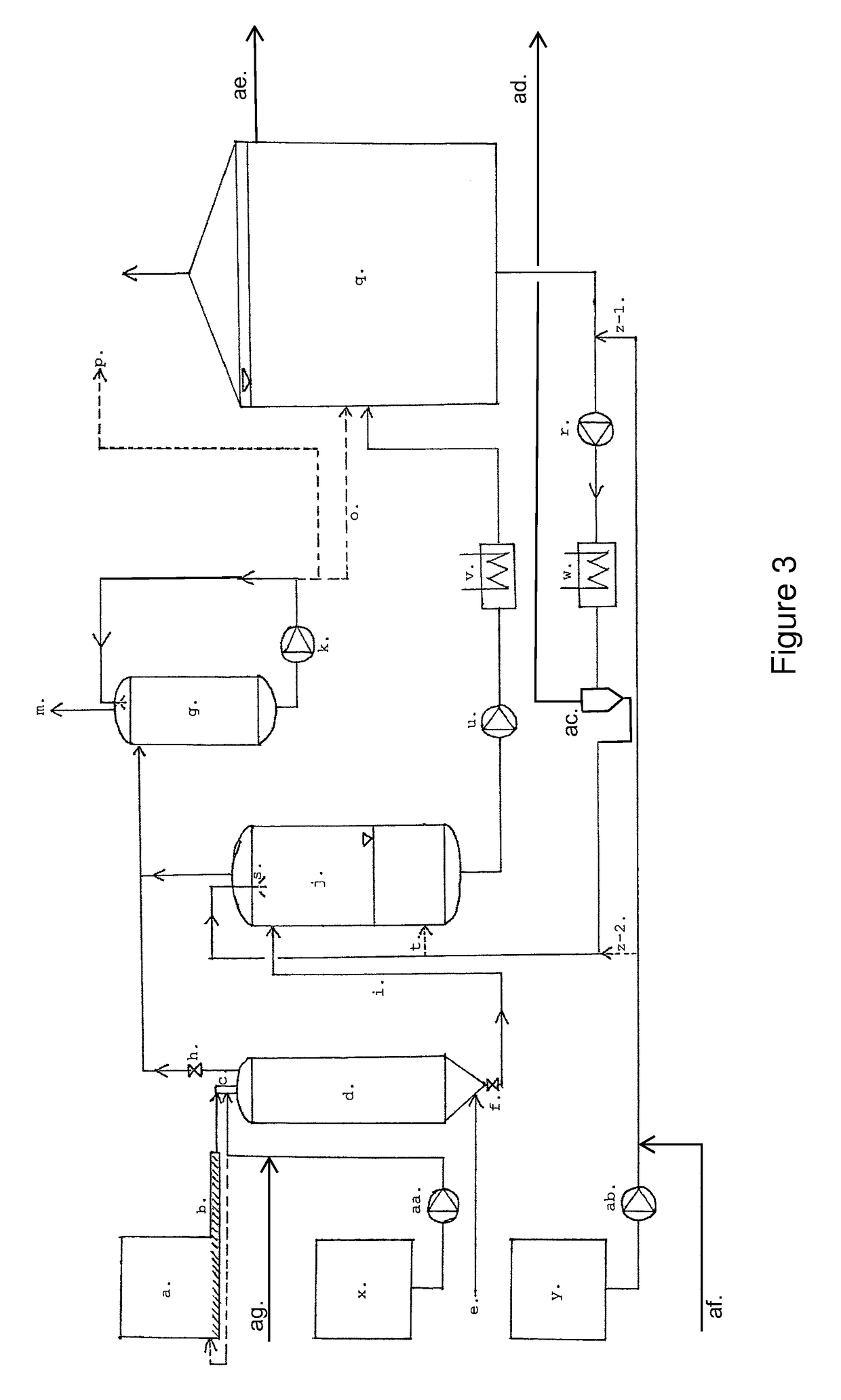Method and device for treating biomass and organic waste
a technology for biomass and organic waste, applied in the field of biomass and organic waste treatment, can solve the problems of high consumption of chemicals in the process, high energy consumption, and corrosion of pumps, reactors and the like, and achieve the effect of increasing the ph-value of the otherwise slightly acidic intermediate produ
- Summary
- Abstract
- Description
- Claims
- Application Information
AI Technical Summary
Benefits of technology
Problems solved by technology
Method used
Image
Examples
Embodiment Construction
[0039]The present invention relates to a method for treating a biomass material comprising at least the steps of:[0040]pre-treatment of said biomass material comprising the steps of:[0041]1) thermal hydrolysis at a temperature above 140° C., followed by[0042]2) wet explosion, resulting in an intermediate product having a dry matter concentration above 25% and a temperature above 90° C.,[0043]subsequent fermentation of said intermediate product in a digestion tank,
and is further characterized in that said intermediate product is introduced into said digestion tank by mixing it into part of the content of said digestion tank being transported in a recirculation loop emerging from said digestion tank, wherein said mixing is performed before the mixture of said intermediate product and said part of the content of said digestion tank enters said digestion tank.
[0044]The content of dry matter in the material resulting from a THP-like process is usually very high, sometimes above 90%. When...
PUM
| Property | Measurement | Unit |
|---|---|---|
| temperature | aaaaa | aaaaa |
| pH | aaaaa | aaaaa |
| temperature | aaaaa | aaaaa |
Abstract
Description
Claims
Application Information
 Login to View More
Login to View More - R&D Engineer
- R&D Manager
- IP Professional
- Industry Leading Data Capabilities
- Powerful AI technology
- Patent DNA Extraction
Browse by: Latest US Patents, China's latest patents, Technical Efficacy Thesaurus, Application Domain, Technology Topic, Popular Technical Reports.
© 2024 PatSnap. All rights reserved.Legal|Privacy policy|Modern Slavery Act Transparency Statement|Sitemap|About US| Contact US: help@patsnap.com










